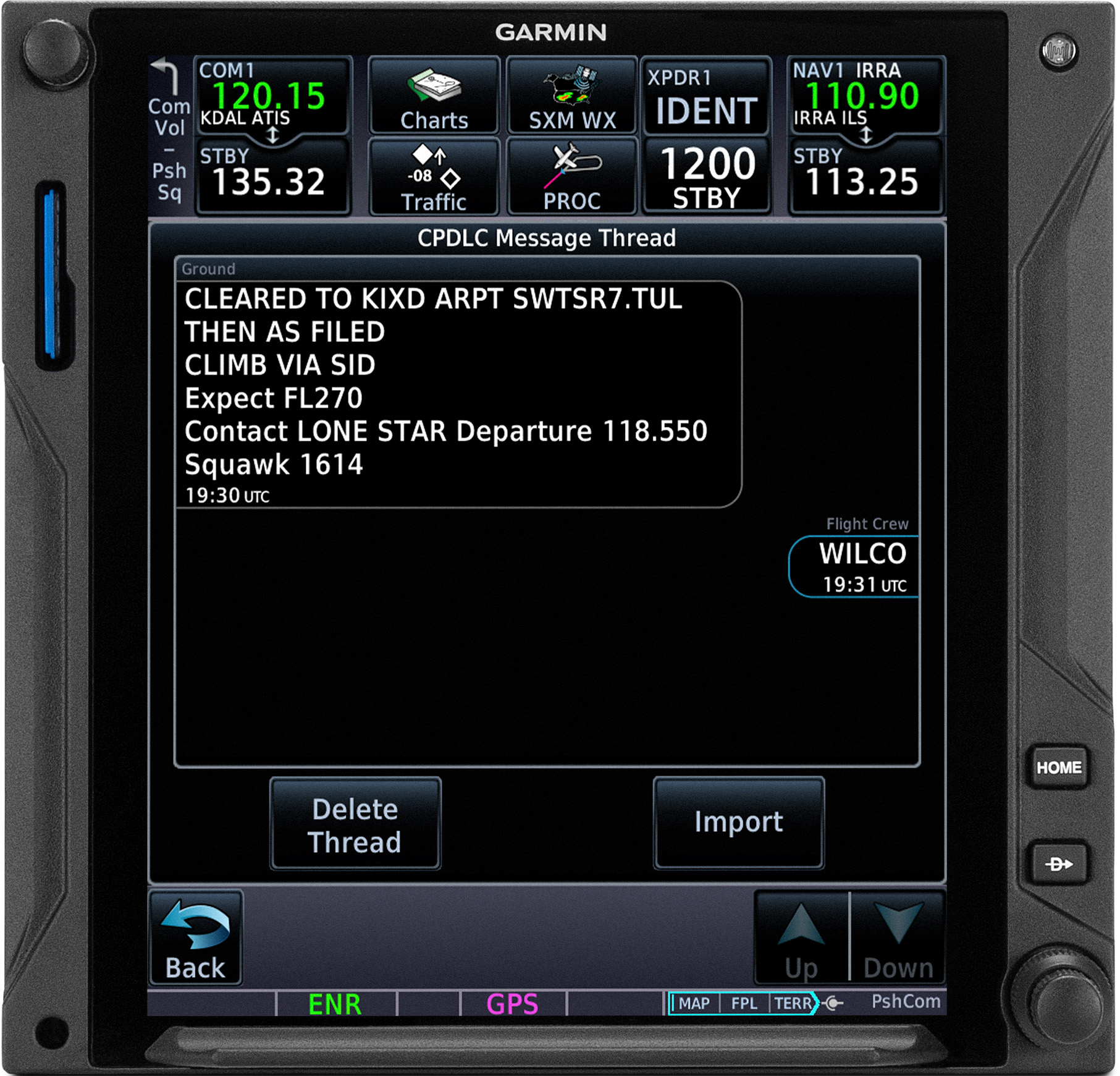Garmin expands ATC text coms to retrofits
GTN 750Xi supports ATC data link
Turboprops and light jets equipped with Garmin GTN 750Xi touch-screen navigators can now communicate with air traffic control via text messaging, with more than 25 aircraft makes and models approved for the program.
Garmin announced June 25 that the GTN 750Xi, matched with a GDR 66 VHF data transceiver, enables pilots with retrofit equipment to receive ATC clearances in a text format. (Garmin G3000 and G5000 integrated flight decks previously supported datalink communication.) The capability can be further enhanced with installation of a Garmin TXi flight display, which enables text-based clearances to be uploaded directly to the GTN 750Xi navigator, eliminating a potential source of error. Radio frequencies, assigned altitudes, and transponder codes can also be pushed directly to onboard avionics, speeding departures.
More than 60 airports are equipped to deliver departure clearances via the Controller Pilot Datalink Communications (CPDLC) system, and aircraft with approved avionics may access the system. Garmin offers annual Data Comm subscriptions.
The FAA recently updated its Data Comm page to advise operators that enroute data coverage below 16,000 feet msl is "not guaranteed," and some aircraft could lose contact with the network when flying at lower altitudes, particularly when descending to land at airports that do not have Data Comm capability. Coverage gaps can also affect some aircraft enroute.
"There can be cases within the airspace operation where high performing turbo props could be assigned lower altitudes where coverage is not guaranteed," the FAA notes. "As a result, there is a possibility for service discontinuity, gaps, or interruptions on routes at lower altitudes. The use of CPDLC at these lower altitudes can lead to increased message failures, which has the undesirable effect of additional ATC workload, and could lead to the aircraft being identified as having unacceptable performance."
The National Business Aviation Association reported on this issue in a June 6 article, reporting that its Airspace and Flight Technologies Subcommittee chairman, Richard J. Boll II, said that the current network of ground stations "provides a reasonable level of service availability of enroute CPDLC coverage east of the Mississippi [River] down to 10,000 feet [msl]. However, west of this area, enroute CPDLC coverage may not be continuously available at altitudes below 16,000 feet."
The agency said there are currently no plans to enable datalink communications at approach facilities. NBAA noted that the primary contractors that built the infrastructure have fulfilled their contracts, and no plans have been announced to expand the network beyond the major cities currently covered.





